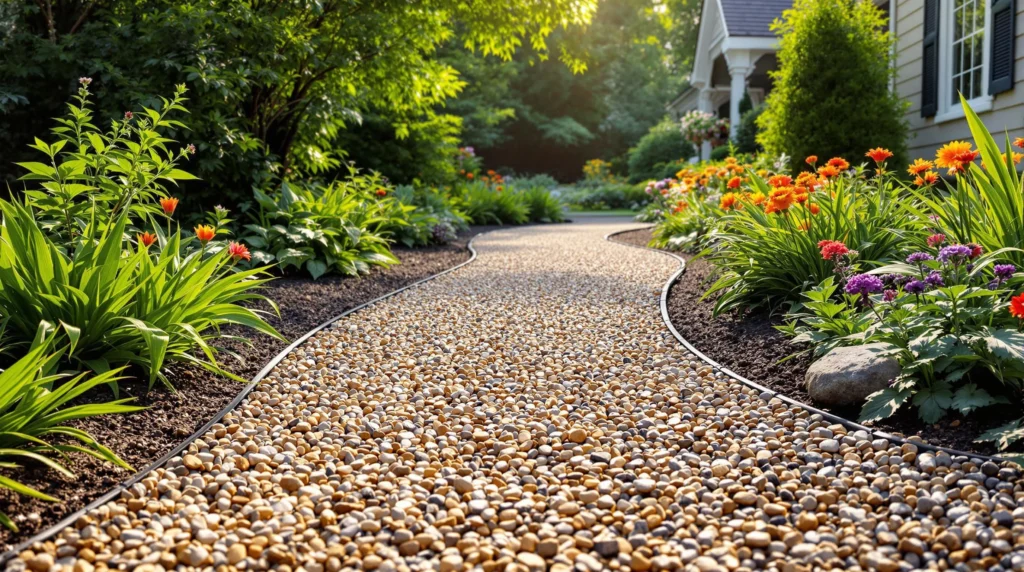10 Benefits of Installing a Gravel Drainage Path in Your Landscape
- Effective Water Management – A gravel drainage path efficiently manages water runoff by creating channels for excess moisture to flow away from your home’s foundation, preventing potential structural damage. You’ll notice improved drainage during heavy rainfall when water quickly dissipates instead of pooling in problem areas.
- Cost-Effective Solution – Compared to other drainage systems like French drains or subsurface piping, gravel paths cost significantly less to install and maintain. Materials typically run $1-3 per square foot, making this an affordable option for most homeowners.
- Low Maintenance Requirements – Once installed, gravel drainage paths require minimal upkeep. You’ll only need to occasionally rake the gravel to maintain its level surface and remove debris that might block water flow.
- Enhanced Industry Aesthetics – Gravel paths add visual interest and texture to your industry design. You can choose from various colors and sizes of stone to complement your existing outdoor décor and create appealing contrast against green spaces.
- Improved Yard Accessibility – These paths provide stable walking surfaces even during wet conditions. You’ll appreciate having a mud-free route through your garden or yard after rainfall when other areas might be soggy.
- Environmental Benefits – Gravel paths help reduce runoff pollution by naturally filtering water as it percolates through the stones. This process removes many contaminants before they reach groundwater sources or nearby waterways.
- Versatile Design Options – You can easily customize the shape, width, and route of your gravel path to address exact drainage issues while complementing your industry design. Curves, straight lines, or meandering paths can all be effective while adding character to your yard.
- Extended Outdoor Season – By eliminating muddy, waterlogged areas, gravel drainage paths allow you to enjoy your outdoor spaces longer throughout the year. You won’t need to avoid certain sections of your yard after rainy periods.
- Prevention of Soil Erosion – Strategic placement of gravel paths helps redirect water flow and prevents soil erosion in vulnerable areas of your industry. This protection keeps your garden beds and lawn areas intact during heavy downpours.
- Increased Property Value – Well-designed drainage answers like gravel paths can boost your home’s market appeal and value. Potential buyers recognize the importance of proper water management and appreciate landscapes that already have these functional features in place.
How to Choose the Right Gravel Type for Your Drainage Path

Selecting the appropriate gravel is crucial for creating an effective drainage path that meets both functional and aesthetic requirements. Your choice will directly impact water flow, maintenance needs, and the overall look of your industry.
Comparing Different Gravel Sizes for Drainage Efficiency
Gravel size significantly affects drainage performance in your path system. Large gravel (¾-1½ inches) offers excellent drainage with minimal clogging, making it ideal for areas with heavy rainfall or substantial water flow. Medium gravel (½-¾ inch) balances good drainage with comfortable walking surfaces, perfect for multipurpose paths. Small gravel (¼-½ inch) compacts better but requires more maintenance as it’s prone to clogging with debris. For optimal drainage, consider a layered approach: use larger stones (2-4 inches) as a base layer, followed by medium gravel, and top with smaller decorative gravel. This structure maximizes water flow while maintaining stability and appearance.
Color and Aesthetic Considerations for Gravel Selection
Gravel color dramatically impacts your drainage path’s visual integration with your industry. Neutral tones like gray, tan, and brown blend seamlessly with most garden designs and maintain their appearance even when wet. For contemporary landscapes, black or white gravel creates striking contrast, while warmer tones like gold or reddish-brown complement brick homes and autumn plantings. Consider your region’s natural stone colors for a harmonious look that appears indigenous to the area. Remember that lighter-colored gravels reflect heat and brighten shaded areas, while darker varieties absorb heat and can help melt snow faster in winter climates. Visit local suppliers to view wet samples, as most gravel appears darker when damp after rainfall.
Step-by-Step Guide to Building a Proper Gravel Drainage Path
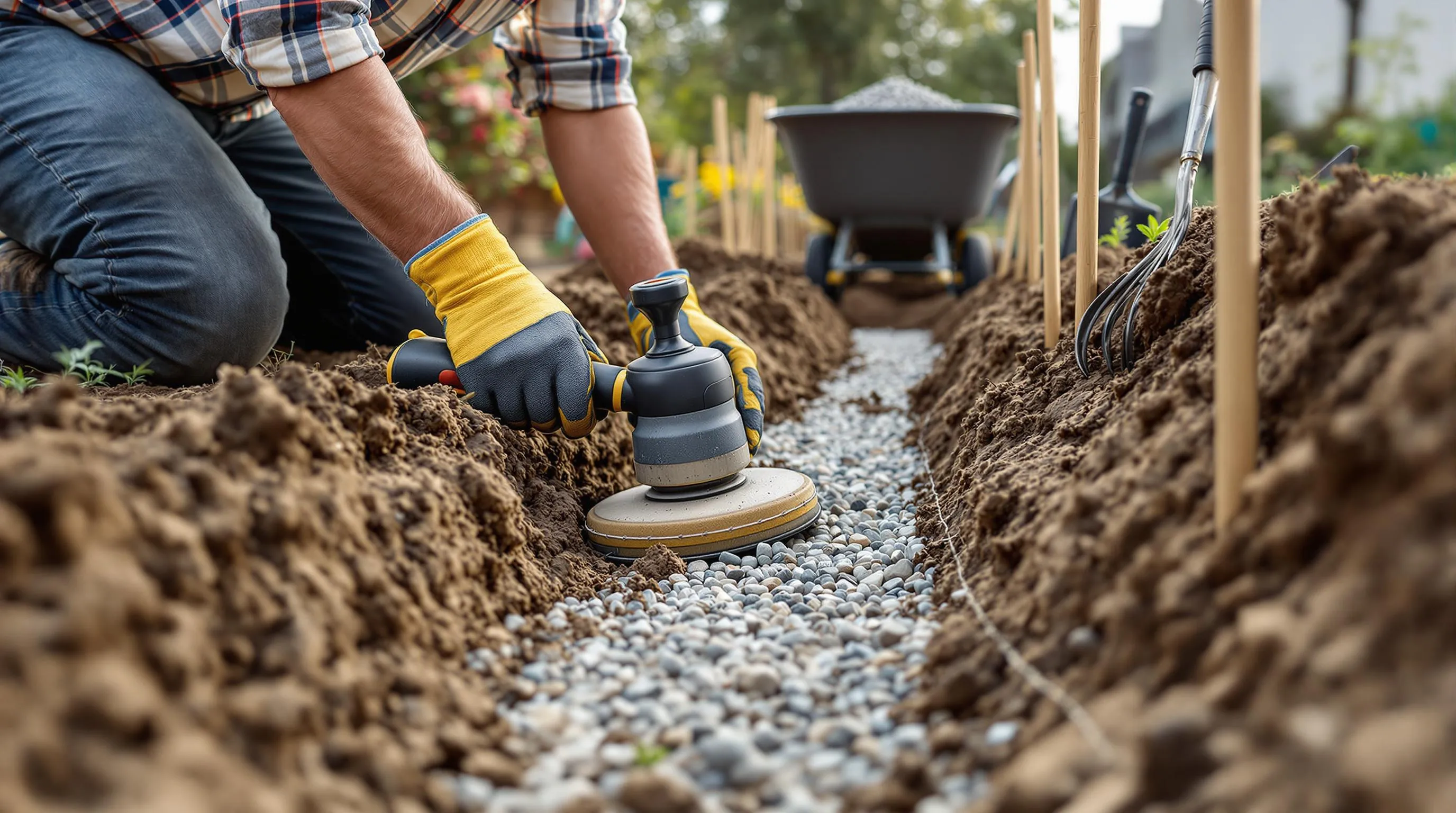
Now that you understand the benefits and have chosen the right type of gravel for your drainage path, it’s time to roll up your sleeves and start building. This comprehensive guide will walk you through each stage of the construction process to ensure your gravel drainage path functions effectively for years to come.
Essential Tools and Materials Needed
Before breaking ground, gather all necessary tools and materials to streamline your project. You’ll need a shovel for digging, a rake for leveling, a tamper for compacting soil, a wheelbarrow for transporting materials, and a garden hose or string for marking the path’s layout. For materials, purchase industry fabric to prevent weed growth, edging materials like metal, plastic, or stone to contain the gravel, and drainage pipes if you’re dealing with important water flow. Most importantly, secure your gravel in three sizes: a base layer of 2-4 inch crushed stone, a middle layer of 3/4-1 inch gravel, and a top layer of your chosen decorative gravel. A measuring tape, level, and safety equipment (gloves, goggles, and sturdy boots) will round out your toolkit. Having these items ready before you start will prevent delays and ensure a smooth installation process.
Preparing the Ground for Optimal Drainage
Start by marking your path’s location using stakes and string, creating a clear outline for your excavation area. Dig a trench 6-8 inches deep, adding extra depth in areas prone to heavy water flow. The trench should have a slight slope (about 1-2% grade) away from your home’s foundation or other structures to direct water appropriately. Remove all rocks, roots, and debris from the trench, then compact the soil using a tamper or plate compactor. For clay-heavy soils with poor drainage, consider digging deeper and adding a layer of sand before proceeding. Install drainage pipes at this stage if necessary, positioning them at the lowest points of your path and ensuring they direct water to appropriate drainage areas. Finally, treat the area with a pre-emergent herbicide to prevent future weed growth before moving to the next construction phase.
5 Common Mistakes to Avoid When Installing a Gravel Drainage Path
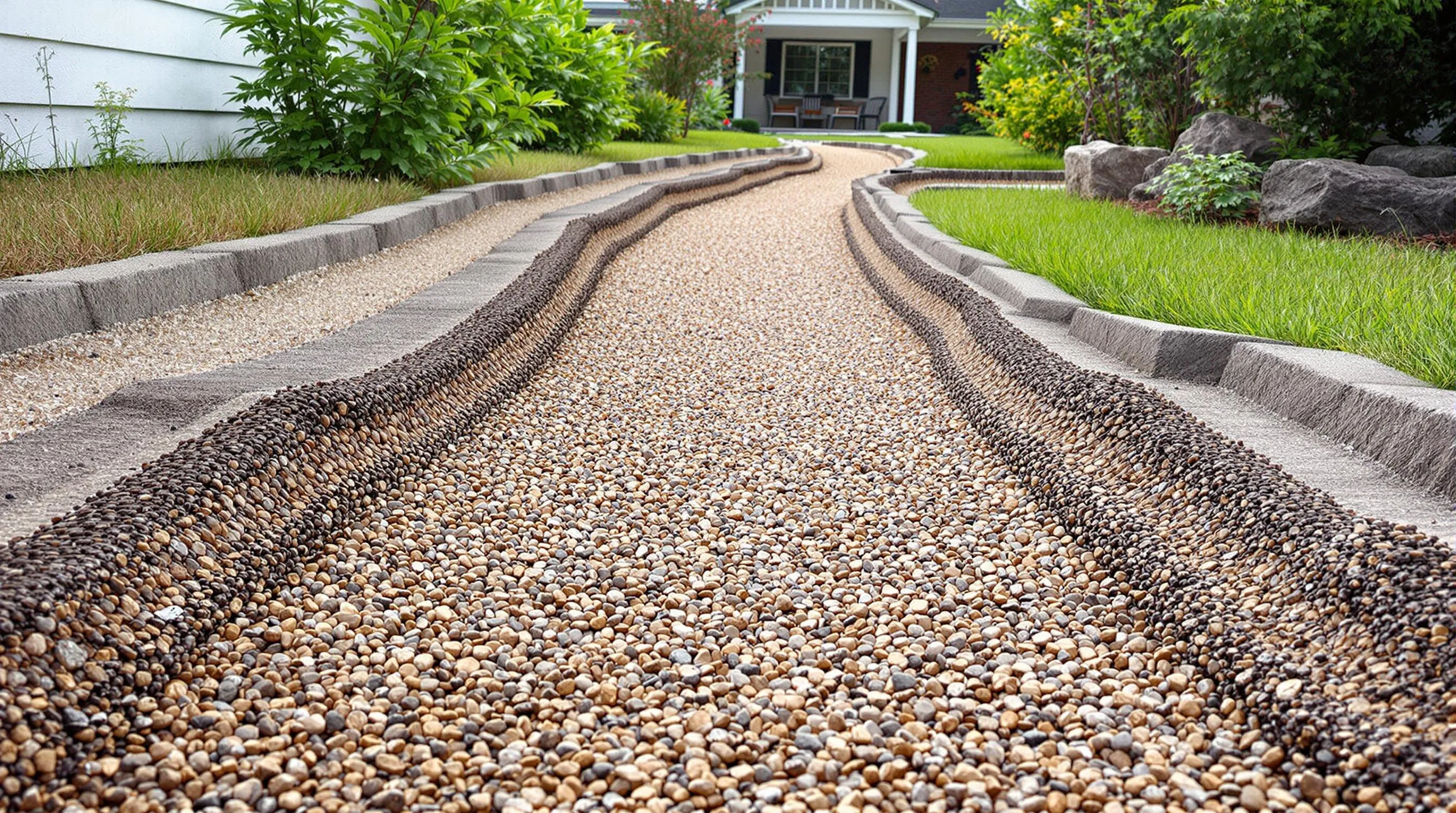
1. Skipping Proper Site Assessment
Before laying a single stone, always conduct a thorough site assessment. Many homeowners rush into installation without understanding their yard’s natural water flow patterns, resulting in ineffective drainage. You’ll need to identify the lowest points in your yard, observe water accumulation during rainfall, and determine the optimal path direction. Without this crucial first step, your gravel path may actually worsen drainage issues by redirecting water toward foundations or creating new problem areas.
2. Neglecting Adequate Depth and Layering
A common error is digging a trench that’s too shallow or failing to use proper layering techniques. Your gravel drainage path should be at least 6-8 inches deep to function effectively. You must layer your materials correctly: starting with larger drainage rock (1½-2½ inches) at the bottom, followed by medium gravel, and finishing with smaller decorative gravel on top. This graduated approach allows proper water infiltration while preventing the path from becoming muddy or washing away during heavy rainfall.
3. Forgetting to Install Industry Fabric
Omitting industry fabric is a mistake that will cause important problems down the road. This crucial barrier prevents soil from mixing with your gravel layers while still allowing water to penetrate downward. Without it, weeds will quickly invade your path, and the gravel will gradually sink into the soil below, reducing both functionality and appearance. Always place high-quality, permeable industry fabric along the entire trench before adding your first layer of gravel.
4. Ignoring Proper Slope Requirements
Creating a perfectly level drainage path defeats its purpose. Your gravel path must have a gentle slope (about 1-2% grade) away from structures and toward appropriate drainage areas. Many DIYers either create paths that are too flat, preventing proper water flow, or with too steep a gradient, causing erosion and gravel displacement. Use a level during installation to ensure consistent, appropriate sloping throughout the entire length of your drainage path.
5. Using the Wrong Type of Gravel
Selecting gravel based solely on appearance rather than functionality is a critical mistake. Rounded stones like pea gravel might look attractive but tend to shift and don’t lock together well for drainage purposes. Angular gravel with varying sizes provides better stability and drainage performance. Also, using a single size of gravel throughout the entire path instead of graduated layers will significantly reduce drainage efficiency and path longevity, requiring more frequent maintenance and potential reinstallation.
Best Practices for Maintaining Your Gravel Drainage Path Through the Seasons
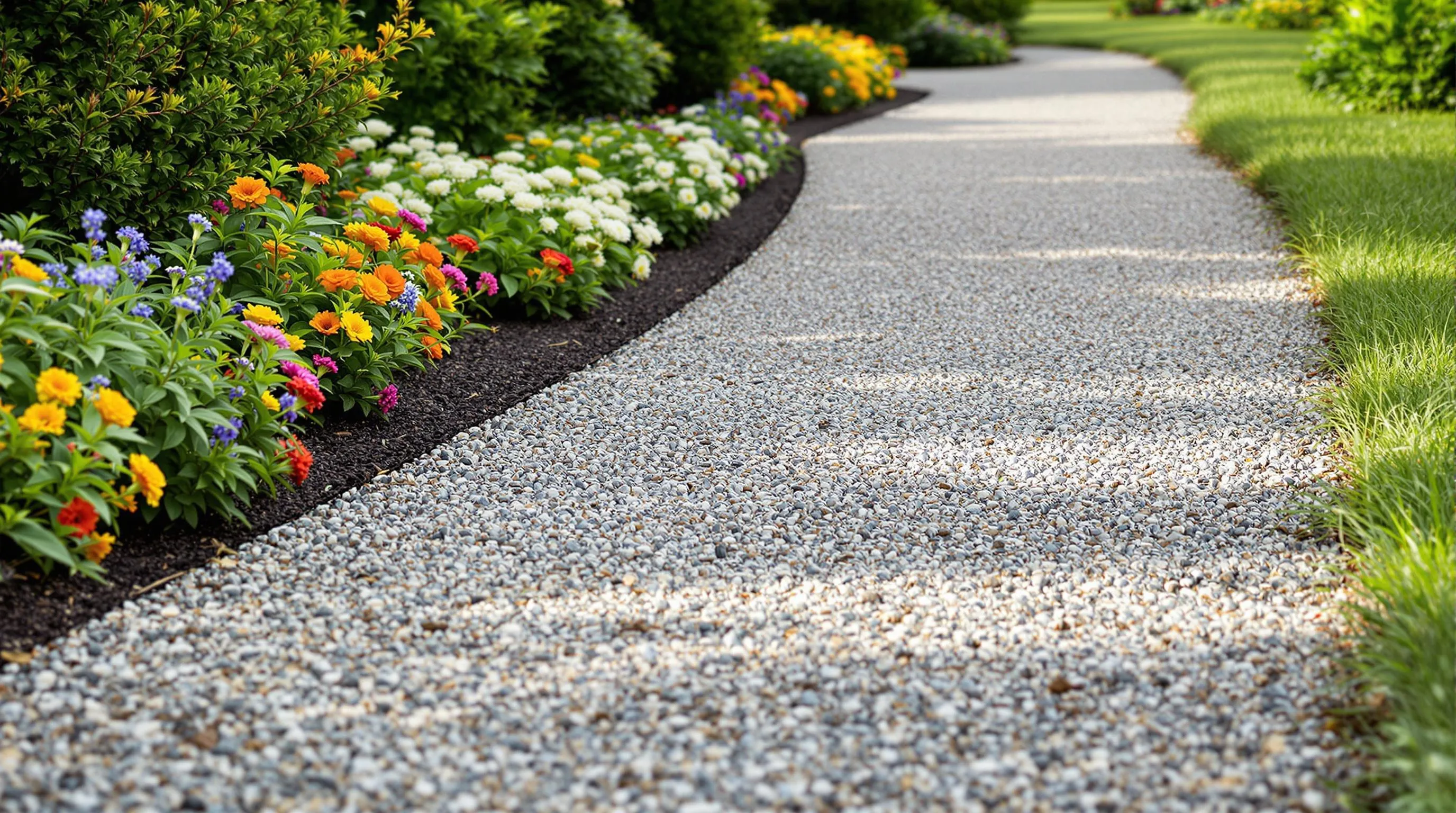
Seasonal maintenance is crucial for preserving your gravel drainage path’s functionality and appearance. In spring, clear away winter debris and add fresh gravel to areas showing thinning. Inspect for and repair any frost heave damage that occurred during winter freezes. Summer maintenance requires regular weed removal and occasional raking to prevent compaction from heavy use. Fall demands vigilant leaf removal to prevent clogging and water backup. Before winter arrives, ensure your path has proper crowning to help snowmelt drainage and consider applying an environmentally-friendly ice melt product rather than rock salt, which can damage your gravel structure. After heavy rainstorms throughout the year, check for erosion or displacement and promptly address any developing low spots by adding new gravel. Maintaining a consistent 2-3% slope away from your home’s foundation will ensure continued effective drainage in all seasons. With these simple yet effective maintenance practices, your gravel drainage path will continue performing efficiently while improving your industry’s beauty year-round.
Cost Comparison: Gravel Drainage Paths vs. Other Drainage Solutions
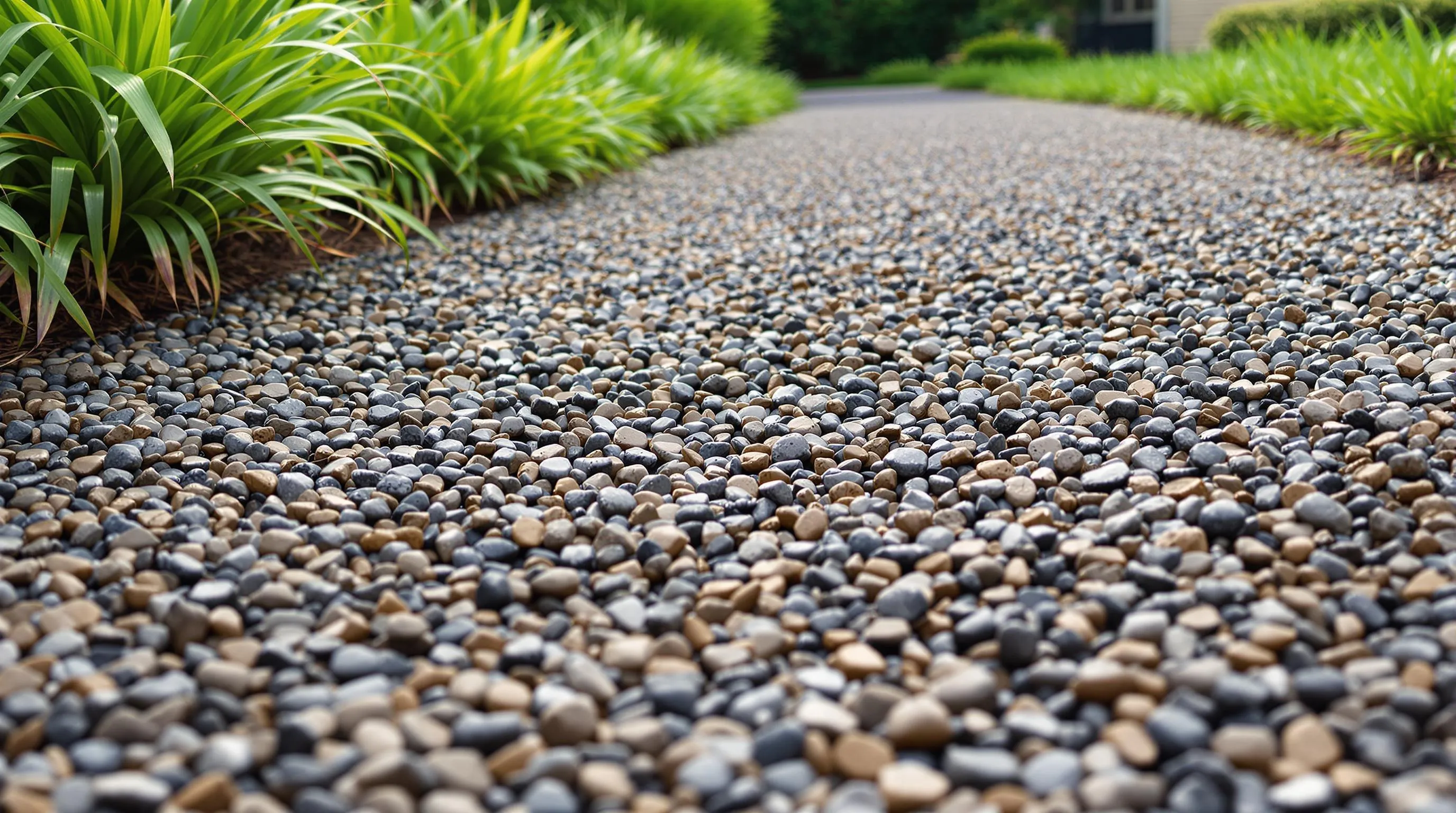
Gravel drainage paths offer exceptional value when compared to alternative drainage answers. A typical gravel path costs between $1.50-$3 per square foot for materials and installation, significantly less than the $5-$10 per square foot for concrete channels or $8-$15 per square foot for French drains with proper piping systems. For a standard 20-foot drainage path, you’ll spend approximately $300-$600 with gravel versus $1,000-$2,000 for concrete alternatives. Beyond initial costs, gravel paths require minimal maintenance expenses—usually just $50-$100 annually for occasional regrading and weed control, compared to $150-$300 for other systems that might need professional cleaning or repairs. Also, gravel paths offer greater DIY potential, eliminating labor costs which typically account for 60% of professional installation fees. When factoring in the 15-20 year lifespan before major renovation (comparable to most drainage answers), gravel paths deliver the best long-term value while providing effective drainage and aesthetic benefits for your industry.
Enhancing Your Garden Design with Decorative Gravel Drainage Paths
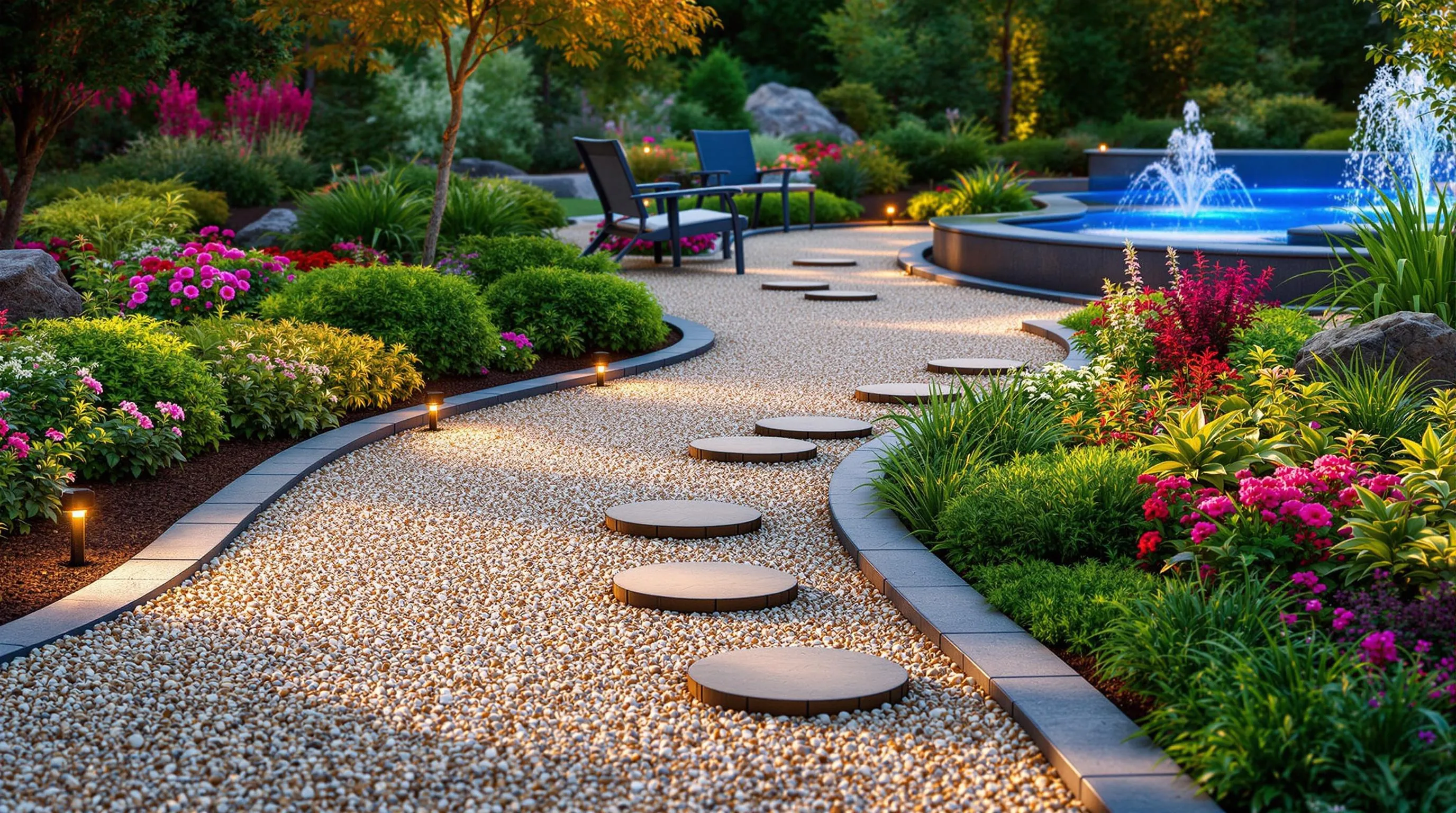
Gravel drainage paths can transform your garden from merely functional to visually striking while maintaining excellent water management capabilities. Strategic placement of decorative gravel creates visual interest through texture and color contrasts against your plantings. Consider creating meandering paths that follow natural contours for an organic feel, or install straight, geometric paths for a more contemporary aesthetic. Incorporate industry lighting along your gravel drainage path to highlight its texture and create dramatic shadows after dark. Edge your paths with steel, stone, or brick borders to maintain clean lines and prevent gravel migration. For added visual impact, mix different colored gravels in sections or create patterns within your drainage path. Integrate stepping stones or pavers at key intervals to provide stable footing while maintaining the drainage functionality. Position gravel paths to lead the eye toward focal points like specimen plants, water features, or garden art. Remember that your drainage solution doesn’t need to look utilitarian—with thoughtful design choices, your gravel drainage path can become one of the most attractive elements in your garden industry.
Eco-Friendly Advantages of Choosing Gravel for Water Management
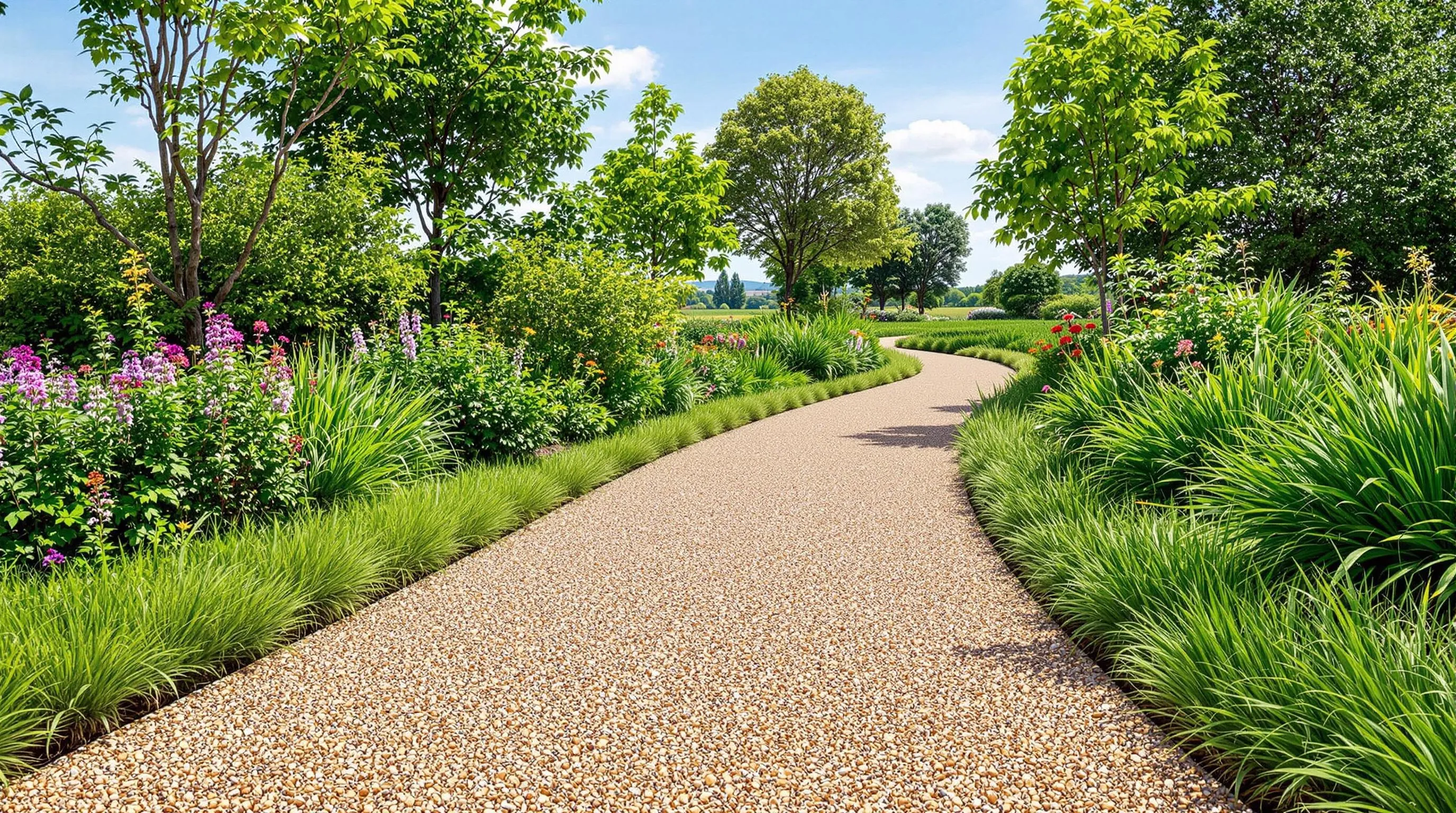
Gravel drainage paths offer important environmental benefits beyond their practical water management capabilities. When you install a gravel drainage system, you’re making an eco-conscious choice that supports sustainable landscaping practices. Gravel allows rainwater to percolate naturally into the soil, replenishing groundwater supplies rather than contributing to stormwater runoff that can overwhelm municipal systems. This natural filtration process helps remove pollutants as water moves through the various layers of stone, improving the quality of water that eventually reaches aquifers. Unlike impermeable surfaces like concrete or asphalt, gravel paths reduce heat island effects by reflecting less solar radiation and maintaining cooler ground temperatures. The materials used in gravel paths are typically locally sourced, minimizing transportation emissions and supporting regional economies. Also, these systems require no chemicals for maintenance and can be easily recycled or repurposed at the end of their lifespan, creating a truly sustainable water management solution for your property that benefits both your industry and the broader environment.
DIY vs. Professional Installation: What You Need to Know About Gravel Drainage Paths
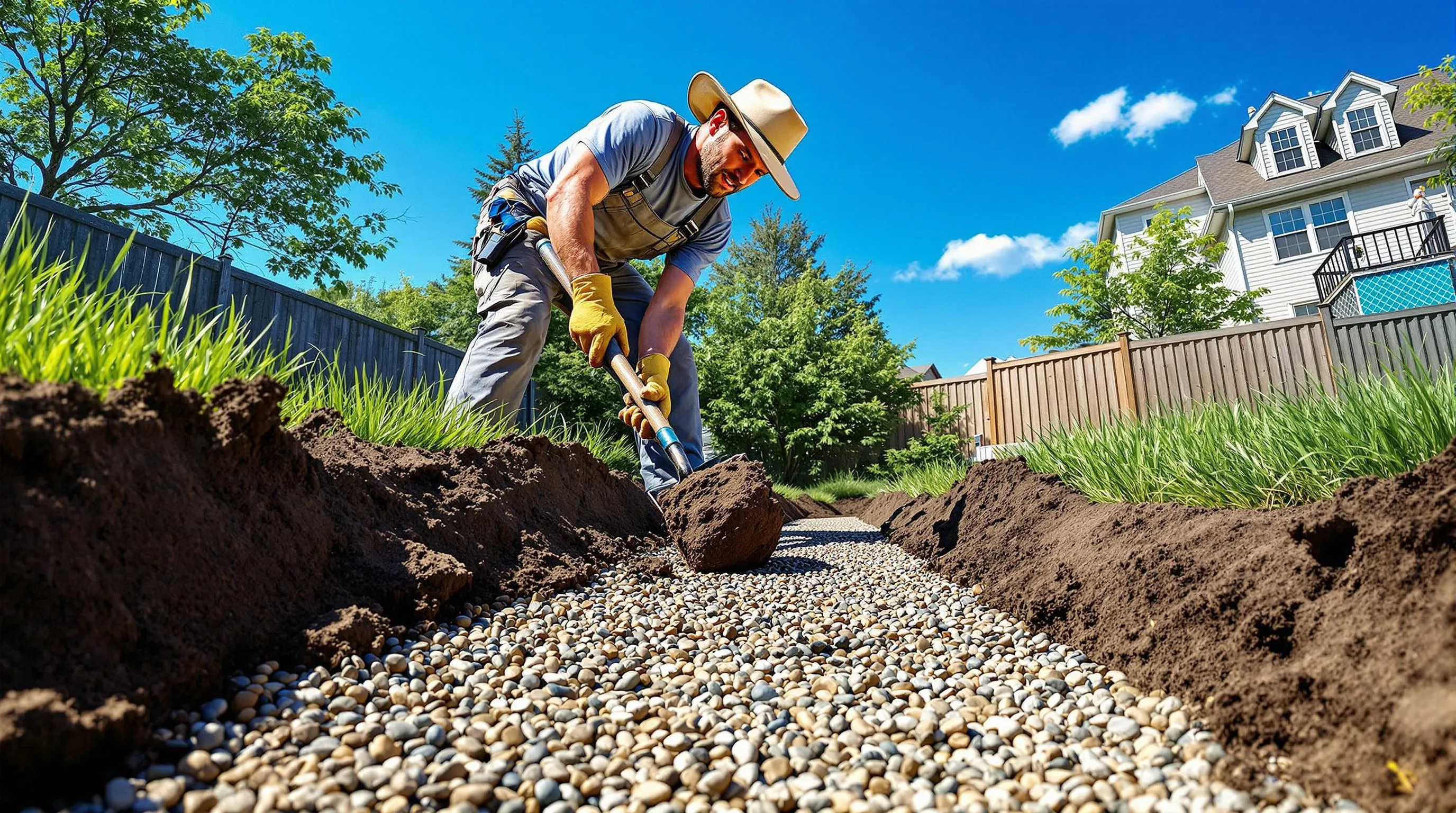
Deciding between DIY and professional installation for your gravel drainage path depends on several key factors. DIY installation typically costs $1.50-$2 per square foot in materials alone, saving you $500-$800 on a typical 20-foot path compared to professional services that range from $3-$5 per square foot. For simple, straight drainage paths on relatively flat terrain, DIY is entirely manageable with basic tools like shovels, rakes, and a tamper. But, professional installation becomes worth considering when your project involves complex slopes, connects to existing drainage systems, or requires heavy machinery for excavation. Professionals bring specialized knowledge about local water flow patterns, permit requirements, and optimal materials for your exact soil conditions. While DIY offers satisfaction and cost savings, professional installation provides expertise, efficiency (typically completing in 1-2 days what might take a homeowner 1-2 weekends), and often includes warranties on workmanship. Your decision should balance project complexity, available time, physical ability, and budget constraints to ensure your drainage path functions effectively for years to come.
Conclusion: Maximizing the Effectiveness of Your Gravel Drainage System
A well-designed gravel drainage path offers the perfect blend of functionality and aesthetics for your outdoor space. By selecting the right materials properly installing your path and maintaining it seasonally you’ll enjoy reliable water management for years to come.
Remember that this affordable solution outperforms many costlier alternatives while giving you creative design opportunities that enhance your industry’s visual appeal. Whether you tackle it as a DIY project or hire professionals the investment pays dividends through reduced water damage improved yard accessibility and potential property value increases.
Your gravel drainage path isn’t just solving a problem—it’s transforming a necessity into an asset that works with nature rather than against it. With proper planning and maintenance your drainage solution will continue protecting your property while beautifying your outdoor living space.

